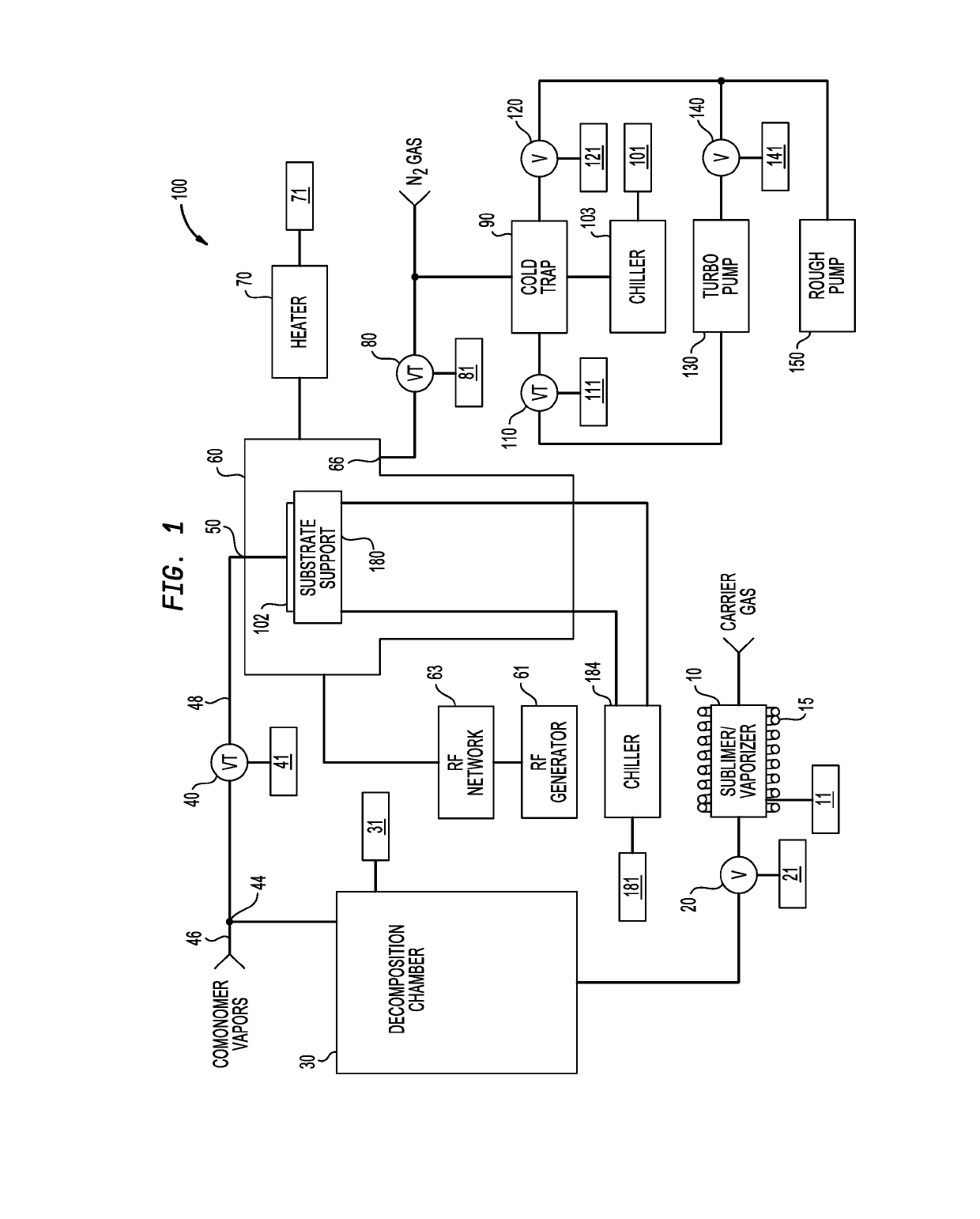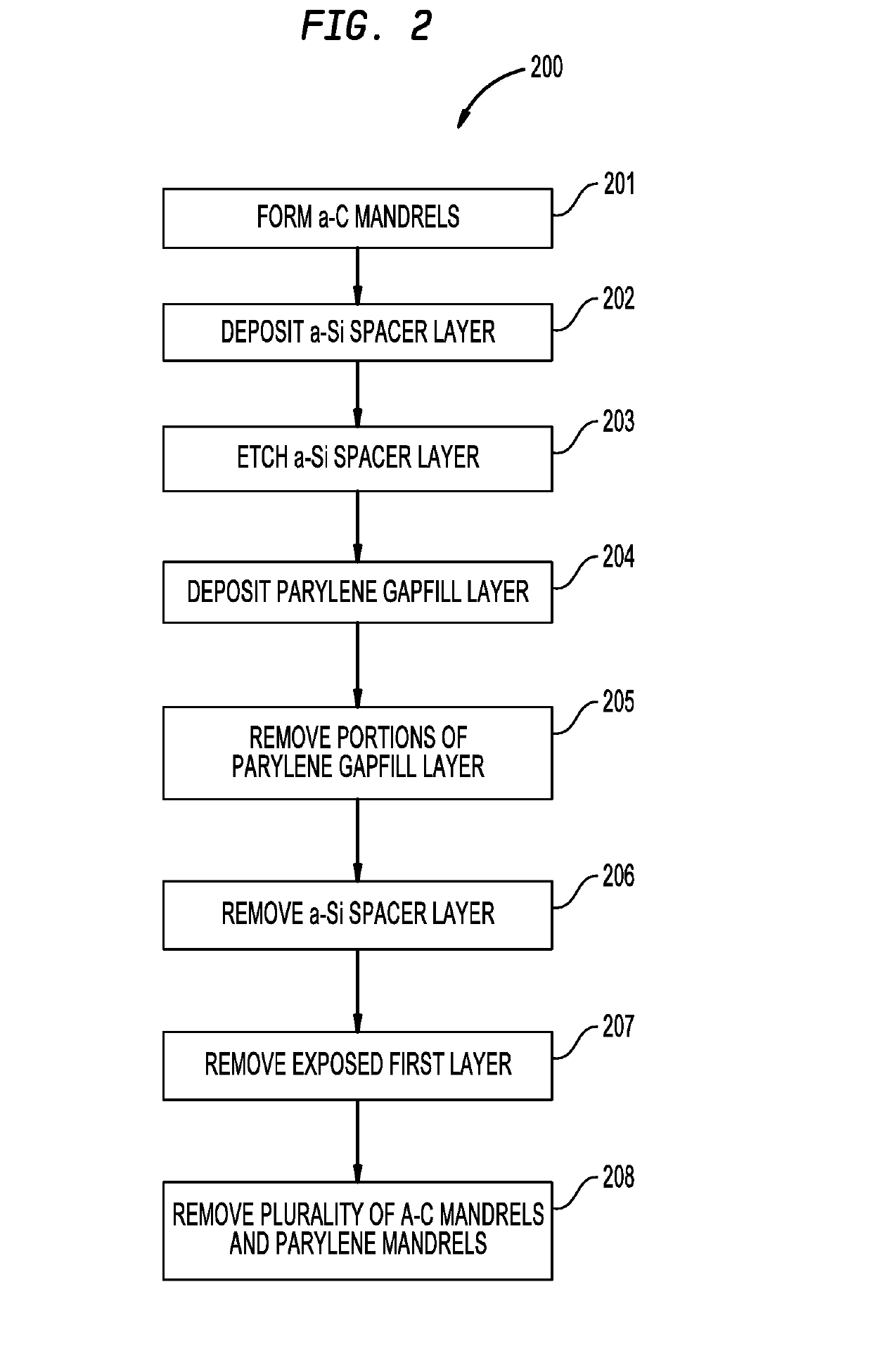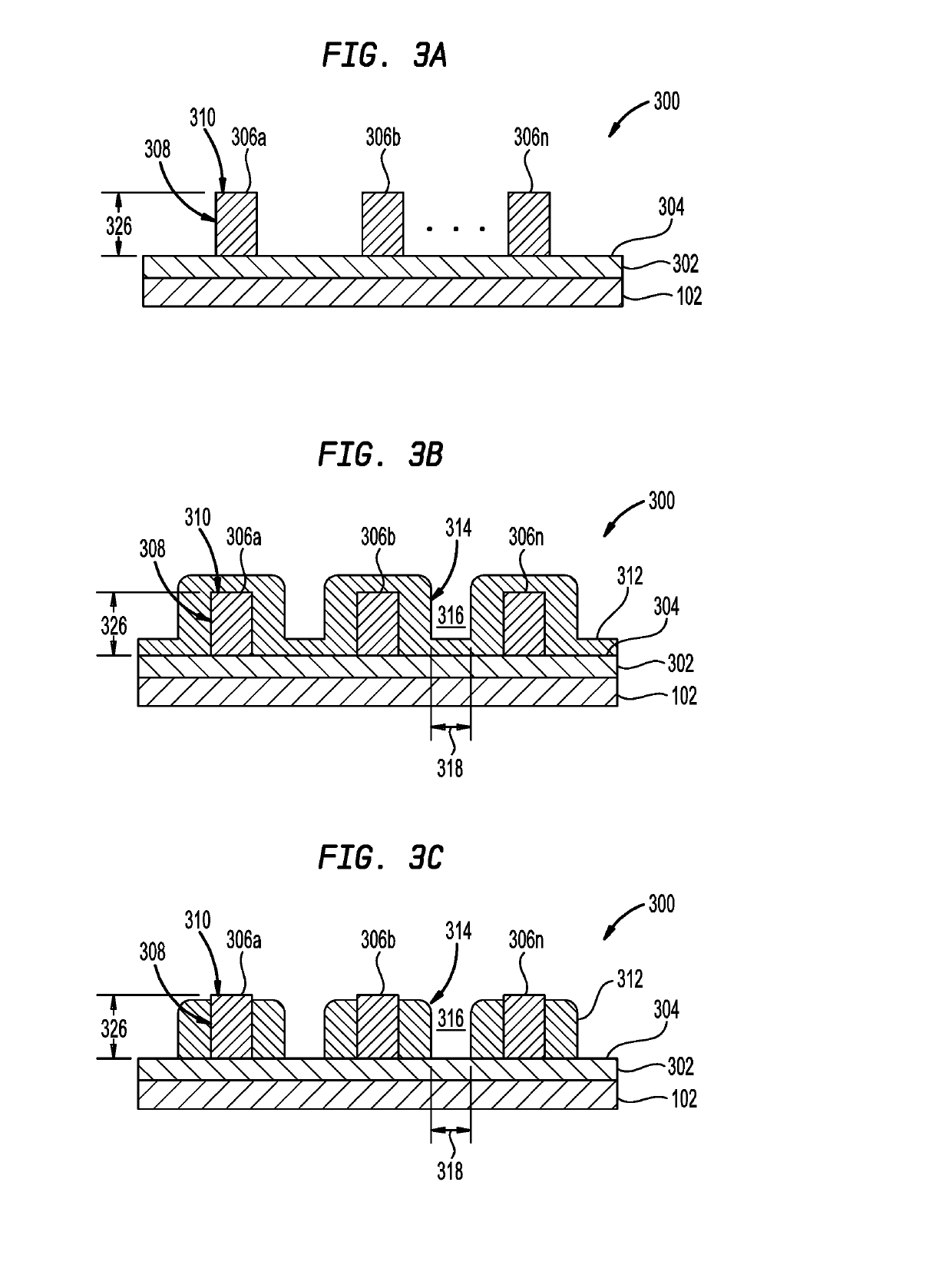Carbon film gapfill for patterning application
a technology of carbon film and patterning, applied in the direction of semiconductor/solid-state device manufacturing, basic electric elements, electric apparatus, etc., can solve the problem of inability to meet the trend of smaller feature sizes of devices
- Summary
- Abstract
- Description
- Claims
- Application Information
AI Technical Summary
Benefits of technology
Problems solved by technology
Method used
Image
Examples
Embodiment Construction
[0018]Embodiments described herein relate to methods for forming patterns of semiconductor devices utilizing parylene gapfill layers deposited using a thermal chemical vapor deposition (CVD) process. In one embodiment the patterns of semiconductor devices are formed by forming amorphous carbon (a-C) mandrels on first layers, depositing amorphous silicon (a-Si) layers over the a-C mandrels and the first layers, etching the a-Si spacer layers to expose top surfaces of the a-C mandrels and to expose the first layers, depositing parylene gapfill layers using the CVD process, removing portions of the parylene gapfill layers until the top surfaces are exposed; and removing the a-Si spacer layers to expose the first layers and form patterns of semiconductor devices having a-C mandrels and parylene mandrels.
[0019]As used herein, the term “parylene” is the generic name for thermoplastic polymers based on p-xylylene (CH2C6H4CH2) or derivatives of the parylene monomers, polymers, or copolymers...
PUM
 Login to View More
Login to View More Abstract
Description
Claims
Application Information
 Login to View More
Login to View More - R&D
- Intellectual Property
- Life Sciences
- Materials
- Tech Scout
- Unparalleled Data Quality
- Higher Quality Content
- 60% Fewer Hallucinations
Browse by: Latest US Patents, China's latest patents, Technical Efficacy Thesaurus, Application Domain, Technology Topic, Popular Technical Reports.
© 2025 PatSnap. All rights reserved.Legal|Privacy policy|Modern Slavery Act Transparency Statement|Sitemap|About US| Contact US: help@patsnap.com



